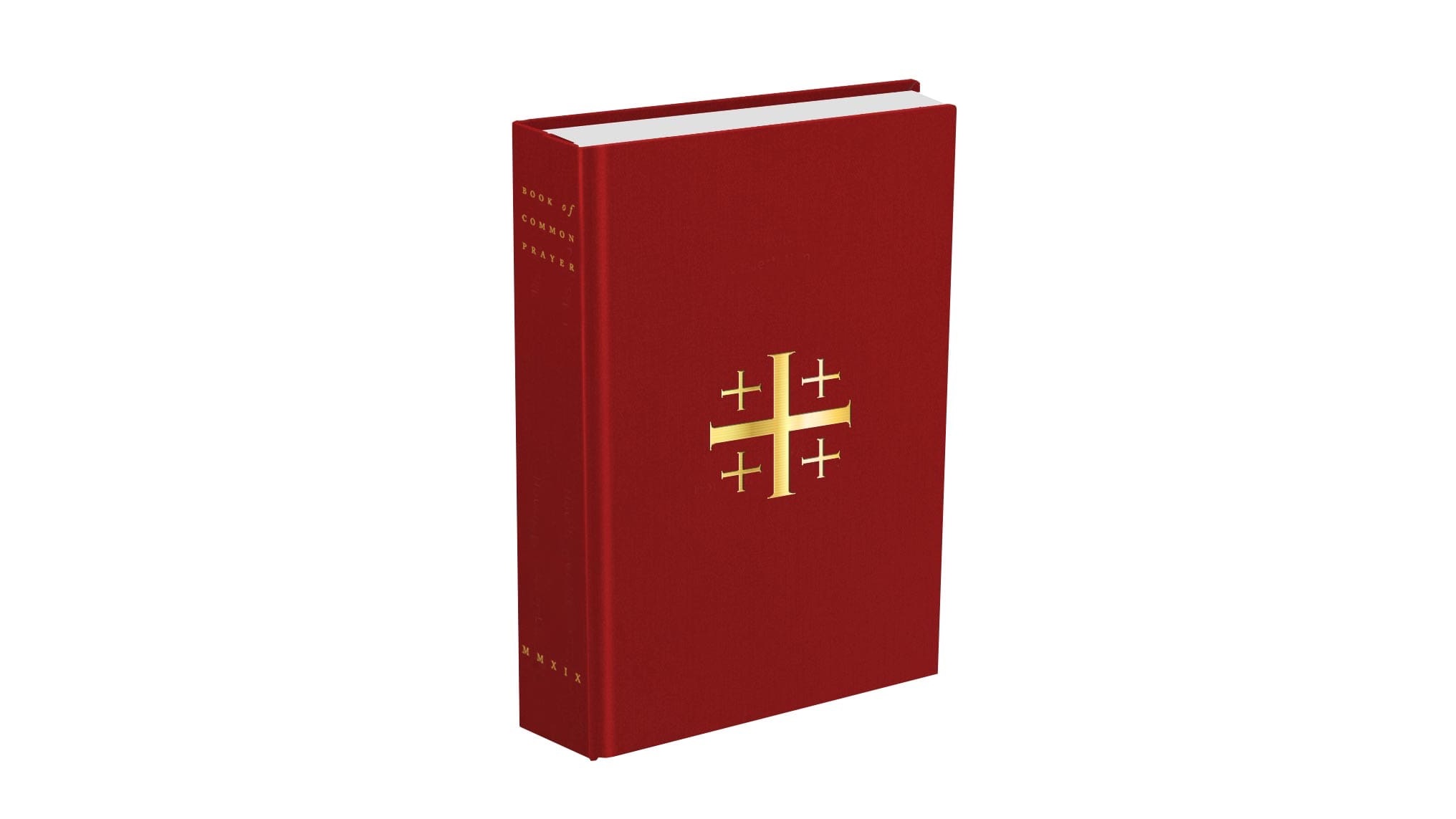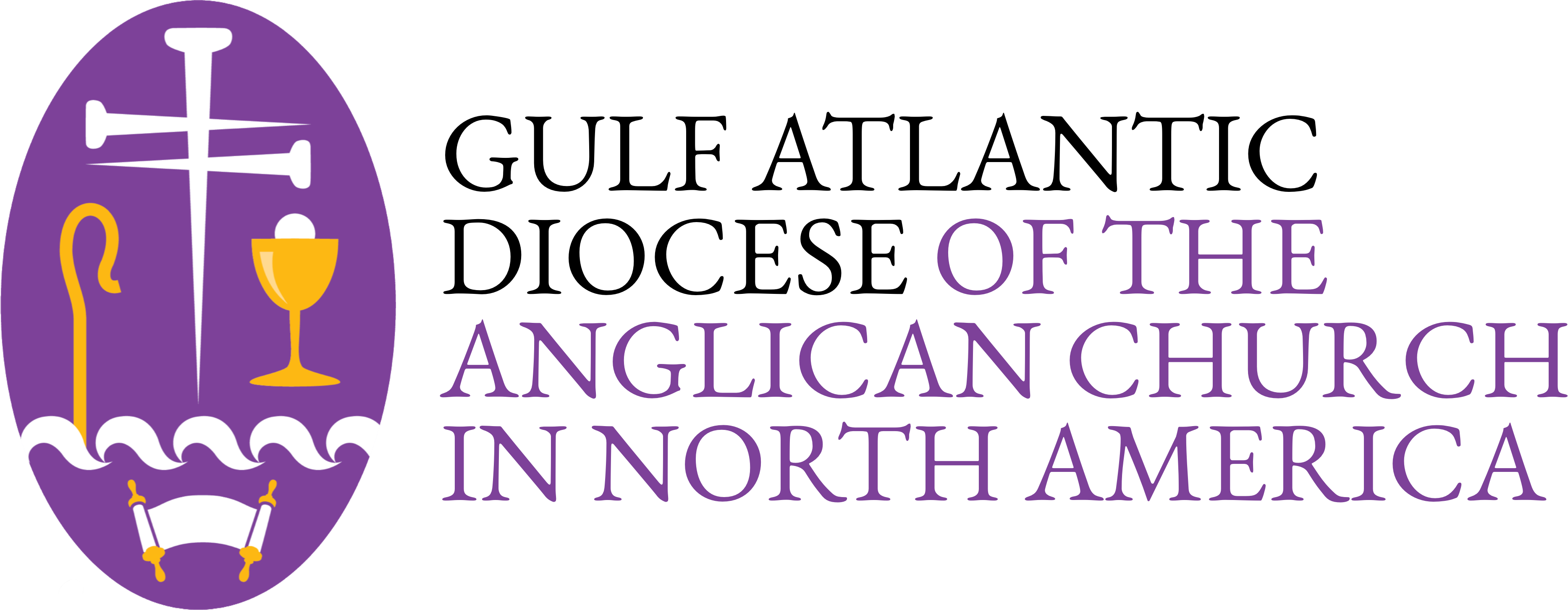
Dear Diocesan Family
As many of you know, at our June Provincial Assembly we had the joy and privilege of receiving the 2019 ACNA Book of Common Prayer. May the Lord be praised!
This is a milestone accomplishment for us, the result of years of faithful and patient collaboration. For Anglicans, our liturgies help us to worship our great God in ways that are Biblically based, following our Anglican heritage of prayer and sacraments.
I strongly encourage all of you to begin to use the 2019 Book of Common Prayer in your public and private worship. I believe it has much to commend it compared to the 1979 Episcopal BCP. For example, its New Coverdale Psalter is a beautiful and more accurate translation. The new Baptismal, Confirmation and Ordination vows are compelling.
Having our own Book of Common Prayer enables us to have worship that is truly more communal, as we together share in forms which help shape us as disciples.
As your bishop, I have been asked many questions about the use of the new prayer book. Let me share my initial responses, recognizing that other questions may arise over time.
When should we start using it?
Many of you are already using it because it has been available online. For those who have not yet begun, consider starting in Advent when the new church year commences. The new lectionary cycle also starts then with Year A.
Please carefully prepare for any change. Consider making use of the helpful videos from the American Anglican Council featuring Archbishop Duncan and others.
During the transition period, parts of a 2019 liturgy may be introduced and substituted one at a time until the full liturgy is employed.
Do we have to use the 2019 BCP?
No, but I certainly hope you will. It is both a trustworthy resource for worship and a key sign of our common ministry and identity in the Anglican Church in North America. And I think that the two forms of the Eucharist are familiar enough for most congregations to make the transition easily.
The Provincial canons do allow the usage of any Book of Common Prayer in regular use in the founding jurisdictions of the ACNA in 2009. Included are the 1928 and the 1979 versions of the Book of Common Prayer.
In the long run, I think it will be increasingly confusing to follow the Episcopal Church’s BCP. We, and the rest of Gafcon, now live in a torn Communion because of the actions of the Episcopal Church and others.
If you have a regular outreach, youth or nursing home service, etc., where you wish to use a simpler or abbreviated liturgy, please share it with me so we may decide together what is appropriate.
Do we have to change from “And also with you” to “And with your spirit”?
This is perhaps the most common question I hear. The answer is that either response is permitted in the Additional Directions (p. 139). Of course “And with your spirit” has a longer history in Anglican worship, and many parishes have already returned to its use.
But this brings up an important point. The Additional Directions sections which follow many liturgies provide much useful information and answer many similar questions. Please consult them.
The rector, as the liturgical leader of a parish, makes these kinds of decisions. They are not to be made by vestries, although of course lay leaders may be consulted. (Diocesan Canon XX.1)
I would encourage you not to resist changing to the new liturgies just because you do not like change (few of us do). And please support your clergy as they seek to lead worship in ways that are faithful and pastorally appropriate. I trust they will follow these directives, and consult me if they have any issues in trying to do so.
How much may we alter the liturgies?
In general, no one may make alterations to the words of the liturgies that are not already permitted in the rubrics or Additional Directions, unless there is prior permission from me. (This policy pertains to previous versions of the BCP as well.) The 2019 Book of Common Prayer will soon be copyrighted. Individual liturgies, prayers and sections may be printed or projected without getting copyright permission.
Having said that, let me give some liberty. Prayers from other liturgies may be added (but not substituted). Other helpful words or explanations may certainly be included as needed. Congregations may similarly add short parts from other Anglican services, the Kenyan Dismissal being one example. A church mission statement may be added. Permission from me for such short additions is not necessary.
Note that other forms of the Prayers of the People may be used, within the boundaries described in the Additional Directions (p.140).
Musical selections that have slightly different wording than the Prayer Book versions, such as for an Agnus Dei or a Gloria, may be used. And note that other hymns or songs may be used in several places.
At the same time, this is a good season in which to review and decide if things added in the past still have relevance to the life of the current congregation.
What I do not want in the long run are liturgies which mix significant parts from different liturgies. For example, using the first part of a 2019 Eucharist before the Peace followed by a 1979 Great Thanksgiving will not be acceptable. Such combinations will lead to confusion down the line. Liturgies each have their own rationale, vocabulary, theology and history, which should all be respected.
The 1979 BCP offered so many alternatives that clergy had a great variety of options. Unfortunately, this led to clergy being sometimes overly creative in preparing liturgies. The results were often more confusing than beneficial. Let us not head down that road again.
Overall, as Christians we are called to be in submission to what we have received from our leadership (1 Corinthians 11:23, Hebrews 13:17). Our new 2019 Prayer Book is the result of a prayerful and painstaking process by a skilled liturgy team, with much helpful input received from around the ACNA. The final review and approval came from the College of Bishops. While I know it is not perfect, (no human creation ever is), let us receive the 2019 Book of Common Prayer as an opportunity for godly submission.
What shall we use for special services?
For the Confirmation services and the Ordination services we will be using the 2019 liturgies unless there are special circumstances and permission is granted. I strongly recommend the use of the 2019 Baptism and Holy Matrimony services, along with the other special liturgies provided.
Should we have the new 2019 BCP in the pews?
I will leave that to each rector and vestry to decide. (Not every congregation even has pews!) It is often useful to have prayer books available for funerals and other services because creating PowerPoint slides or individual worship booklets on short order can be a problem.
Having the Book of Common Prayer in our congregations also helps both visitors and us to appreciate our worship tradition. Many parishes are suggesting that parishioners each buy two prayer books, one for their own use and one as a gift to the parish. (Click this link to see the texts and purchase information.) Know that it is taking some time to get the books printed and delivered, so you may want to order as early as possible.
I trust this is all helpful. If you have any questions, please be in touch with me. I will be trying to give liberty while maintaining identifiable Anglican worship. While I am aware it is tempting to follow the old cliché, “It’s better to ask for forgiveness than permission,” let me encourage you to consult me for permission first whenever possible.
I truly believe the 2019 Book of Common Prayer is a significant gift from the Lord to help us worship Him. To Him be all the glory!
In Jesus the Messiah,
+Neil
The Rt. Rev. Neil G. Lebhar
